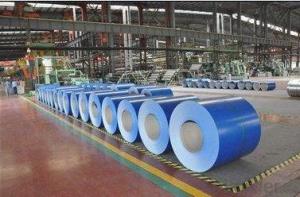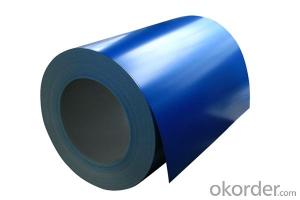Hot Rolled Coil, Hot rolled steel coil, Hot rolled steel coil price
- Loading Port:
- Shanghai
- Payment Terms:
- TT OR LC
- Min Order Qty:
- 50 m.t.
- Supply Capability:
- 3000 m.t./month
OKorder Service Pledge
OKorder Financial Service
You Might Also Like
Quick Details
| Standard: | AISI,ASTM,BS,DIN,GB,JIS,BS1387-85,GB/T3091-08,DIN2440,JIS-G3444,EN10255,ASTM A53, | Steel Grade: | GRA. GR.B.SGCC.SPCC.SPHC.DX510 | Thickness: | 0.17-1.5mm |
| Place of Origin: | TIA,Tianjin,China China (Mainland) | Technique: | hot rolled or cold rolled | Surface Treatment: | Galvanized Polished or Colour coated,zinc coated or colour coated |
| Application: | used to building material/ roof/ profile/ pipe making | Model Number: | according to your requirement | Brand Name: | CNBM |
| Width: | 600-1550mm | Length: | enough meter per ton or according to your requirement | Delivery time: | Within 20 days after the prepayment |
| Certtificate: | ISO9000-2008, BV | HS Code: | 7306309000 | Usage: | Scaffolding pipe, Structure pipe, Fence/Door pipe, Furniture, |
| Supply Ability: | 12000MTS/Month | Payment terms: | T/T;L/C;D/P | MOQ: | 10MTS |
Packaging & Delivery
| Packaging Detail: | In bundles with steel strips |
| Delivery Detail: | About 20 days |
Specifications
hot rolled pickled and oiled steel coil
1. Thickness: 0.12-1.5mm
2. Coil wideth: 600-1550mm
3. 60g-280g/m2
4. delivery in ti
Thickness | 0.12-1.2mm |
Width | 600-1250mm |
Single weight | as your required |
Surface finished | 60-200g/m2 |
Steel gardes | SGCC SGCD DX51D+Z SGC340 SGC400 SGC44O DC51D+Z |
Standard | JIS G3302,ASTM A653, GB/T2518-88,BS, |
Packing | standard export packing |
Used | Use for profile,pipe making, furniture makingppgi and refrigerator |
Minimum quantity | 50MT |
Price | |
Delivery time |
|
Payment terms | |
Supply ability | 3,000MT per month |
- Q: How are steel coils used in the manufacturing of industrial compressors?
- Steel coils are used in the manufacturing of industrial compressors as they are shaped and formed into various components of the compressor, such as the casing, cylinder, and piston. The steel coils provide strength, durability, and stability to these components, allowing the compressor to withstand high pressure and perform efficiently in industrial applications.
- Q: What are the different coil slitting methods used for steel coils?
- Steel coils can be slit into smaller, narrower coils using various methods. These methods serve the purpose of cutting the coils to suit specific applications. 1. The most commonly used method for coil slitting is blade slitting. Circular knives or blades are employed to cut the steel coil into narrower strips. These blades are placed at predetermined intervals and usually attached to a rotating shaft. As the coil passes through the blades, their circular motion slices through the coil, resulting in the desired narrower strips. 2. Another method, known as rotary shear slitting, involves the use of two sets of rotary shear knives to cut the steel coil. These upper and lower sets of knives rotate in opposite directions, creating a scissor-like cutting action. As the coil is fed through the shearing blades, the sharp edges of the knives slice through the coil, producing the desired narrower strips. 3. Sliding shear slitting is yet another method utilized for coil slitting. This method involves a stationary upper knife and a moving lower knife to cut the coil. The lower knife moves back and forth across the coil while the upper knife remains fixed. As the coil passes through the moving knife, it is cut into narrower strips. 4. Crush slitting is a less common method employed for coil slitting. In this method, the steel coil is fed through a set of rollers equipped with blades. Although the blades are not sharp, the pressure exerted by the rollers crushes and fractures the coil, resulting in the creation of the desired narrower strips. 5. Laser slitting is a modern and precise method used for coil slitting. It utilizes a laser beam to cut through the steel coil. The laser beam is directed onto the coil, and its high intensity melts and vaporizes the steel, creating a narrow slit. Laser slitting offers high accuracy and a clean cut, making it suitable for specialized applications. Each of these coil slitting methods possesses its own advantages and limitations. The choice of method depends on factors such as the type of steel, desired strip width, production volume, and required precision. Manufacturers select the most suitable method based on their specific requirements and the properties of the steel coils they are processing.
- Q: What is the weight range of steel coils?
- The weight range of steel coils can vary greatly depending on the specific type and dimensions of the coil. However, typically, steel coils can weigh anywhere from a few hundred kilograms to several tonnes.
- Q: Hi All,I was wanting to know,on the quality bikes such as Trek,Giant etc is the aluminum frames as strong as the steel frame bikes? I have heard conflicting reports on this,so thought I would ask here for more input.Thanks!
- Steel is stronger than aluminum. But, you have to consider the strength to weight ratio and stiffness. Modern aluminum frames use hydro-forming to optimize the tube shapes. They also use modern welding and bonding techniques. In short, a good aluminum frame can be better than a steel frame and have less weight. Consider a Cannondale CAAD alloy frame or a hybrid composite/alloy frame such as a Cannondale Six. Cannondale is know for pioneering alloy frames.
- Q: What are the common handling defects in steel coils?
- Some common handling defects in steel coils include coil damage, coil slippage, coil edge damage, coil distortion, and coil contamination. These defects can occur during transportation, loading and unloading, handling, and storage of the coils.
- Q: What are the common defects in steel coil finishes?
- There are several common defects that can occur in steel coil finishes. These defects can impact the appearance and functionality of the steel and may need to be addressed before the coil can be used or sold. 1. Coil breaks: Coil breaks are a common defect where the steel strip breaks during winding or unwinding. This defect can result in a discontinuity in the surface of the coil and can lead to further damage if not addressed. 2. Edge wave: Edge wave refers to a distortion or waviness at the edges of the steel coil. This defect can occur during the rolling or cooling process and can affect the flatness and uniformity of the coil. 3. Corrosion: Corrosion can occur on the surface of steel coils if they are not properly protected or stored. This can lead to rust and degradation of the steel, impacting its strength and appearance. 4. Streaks and stains: Streaks and stains can occur on the surface of steel coils due to improper cleaning or contamination during the production process. These defects can affect the aesthetic appearance of the steel and may need to be addressed before the coil can be used. 5. Scratches and dents: Scratches and dents can occur on the surface of steel coils during handling, transportation, or storage. These defects can impact the flatness and surface quality of the steel and may require repairs or adjustments. 6. Coating defects: If the steel coil has a coating or paint applied to it, several defects can occur. These include blistering, peeling, or uneven application of the coating, which can affect the durability and appearance of the steel. It is important to note that these defects can vary in severity and may require different methods of repair or mitigation. Regular inspections and quality control measures can help identify and address these defects before they become more significant issues.
- Q: What are the factors affecting the formability of steel coils?
- The factors affecting the formability of steel coils include the composition and microstructure of the steel, the thickness and width of the coil, the temperature and speed of the forming process, the lubrication used during forming, and the presence of any surface defects or contaminants.
- Q: What are the guidelines for handling damaged steel coils?
- The guidelines for handling damaged steel coils typically involve assessing the extent of the damage, ensuring proper safety precautions are in place, and following industry best practices for handling and storing damaged coils. It is important to inspect the damaged coils for any potential hazards, such as sharp edges or protruding objects, and to use appropriate lifting equipment and protective gear when moving or transporting them. Additionally, damaged coils should be segregated from undamaged ones to prevent further deterioration and potential safety risks.
- Q: How are steel coils used in the manufacturing of bridges?
- Steel coils are used in the manufacturing of bridges as they serve as the primary material for constructing the bridge's structural components, such as beams and girders. These coils are processed through various stages, including cutting, shaping, and welding, to create the necessary structural elements that provide strength and support to the bridge. The durability and load-bearing capacity of steel coils make them ideal for withstanding the heavy loads and stresses experienced by bridges, ensuring their stability and longevity.
- Q: Can steel coils be coated with magnetic materials?
- Yes, steel coils can be coated with magnetic materials.
Send your message to us
Hot Rolled Coil, Hot rolled steel coil, Hot rolled steel coil price
- Loading Port:
- Shanghai
- Payment Terms:
- TT OR LC
- Min Order Qty:
- 50 m.t.
- Supply Capability:
- 3000 m.t./month
OKorder Service Pledge
OKorder Financial Service
Similar products
Hot products
Hot Searches
Related keywords




























